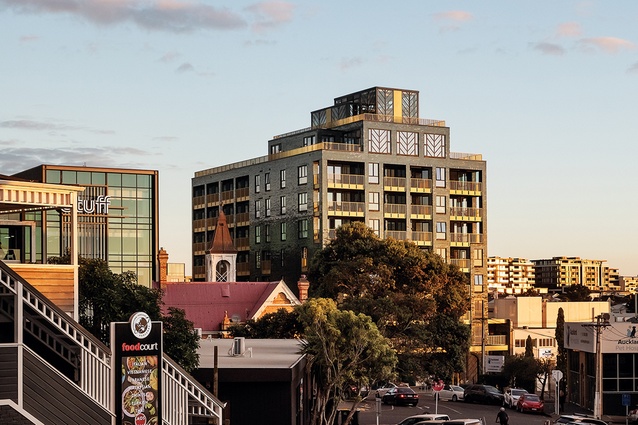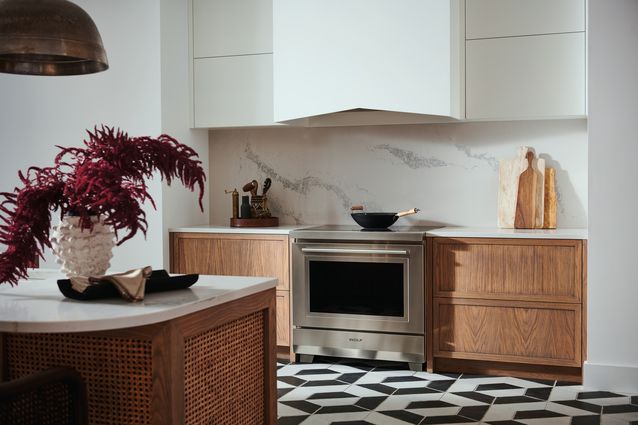From the article:
“On February 3, the nascent labor union Architectural Workers United (AWU) announced that they were withdrawing their petition to unionize the New York-based architecture firm SHoP. The announcement came one day before the scheduled unionization vote among employees of the practice, marking the end of a highly publicized campaign to form the first union at a private American architectural firm since the 1940s. “After a difficult unionizing attempt that was met with a powerful anti-union campaign,” the organizing group said in a statement posted to AWU social media channels, “We have decided to pursue another positive route for change within the office.”
David DiMaria, an organizer for AWU’s parent union, the International Association of Machinists and Aerospace Workers (IAM), told RECORD in early January, that a “solid majority” of SHoP employees had signed union cards, which indicate to the National Labor Relations Board (NLRB) an initial desire to be represented by a union. However, AWU’s February announcement states that the decision to pull their petition reflected “the current majority opinion.”
Employees at SHoP declined to comment to RECORD on how internal support for a union had eroded so significantly in just a few weeks, but AWU cited in their statement that “internal meetings and messaging from leadership” made a number of employees “express a preference for an alternate way to address the issues that have been brought to light.” When asked for comment by RECORD, a spokesperson from SHoP said: “The decision to withdraw their NLRB election petition reflects our staff’s clear desire to determine our collective future together as an employee-owned firm. Any allegations of bad faith campaigning are unfounded and an attempt to undermine the strong majority of SHoP employees who made their views known.”
The bid to unionize SHoP went public in December and has sparked a profession-wide conversation, especially among younger architects and designers, about the exploitative nature of architectural work, given the fields’s notorious long hours and relatively low pay. As the organizing employees at SHoP wrote in their initial letter to the firm’s partners, “SHoP did not create the challenges that are systemic to the discipline of architecture, but we believe that SHoP is the firm that can begin to enact changes that will eventually ensure a more healthy and equitable future for the generations of architects to come.”
While the ultimate failure to organize at SHoP came as a blow to the campaign’s many supporters, with statements of solidarity flooding social media, Peggy Deamer, a founder of The Architecture Lobby (which has long pushed for unionizing architectural labor) said the outcome, though disappointing, was far from unusual. “The final push, where workers really have to decide whether to resist the pressure from managers or not, yields a different result than the initial go-around,” she told RECORD. “It’s sad but not surprising.”
Despite the nonunionization at SHoP, AWU has confirmed to RECORD that they are actively organizing in at least six other firms in New York. Andrew Daley, an architect formerly at SHoP, who left the firm after seven years last September, recently became an associate organizer for IAM and believes the momentum to address labor conditions in architecture remains strong. “So far we have only seen a renewed determination to organize and a gratitude from workers at other firms towards the employees at SHoP for taking the historic step that they took,” he says. “It’s really quite inspiring.”
AWU is continuing its work under the umbrella of IAM, a union with 340,000 active members in a variety of industries, including architects in the public sector. When AWU began to loosely form in late 2020, its organizers interviewed six unions, according to Daley, and chose IAM based on the wide swath of workers they represent and the fact that the union will not require architectural workers to sign a standard contract. “One size does not fit all,” says Daley. “There are different ways of looking at this kind of problem for different industries and thinking about them uniquely.”
The unionization push has led to broad, renewed discussions about the nature of architectural labor, fair compensation, equity, and the toll of unhealthy work practices, with many in the profession agreeing to the need for radical change. But opinions differ over whether unionization is the best strategy to remedy pervasive problems. While the national AIA has been criticized for its silence on these issues, Daley has been in contact with AIA New York, the largest local chapter in the country. “Unionization may very well be one of the methods that would allow for improved rights of architectural workers and lead to culture change,” Benjamin Prosky, Executive Director of AIA New York, said via email to RECORD. “While exploring pathways to unionization, leaders and workers in the architecture field should be open to assessing a range of ways to improve working conditions in the profession.”
Philip Bernstein, associate dean and professor at the Yale School of Architecture, has written extensively about how the flawed business model of architecture has affected the nature of labor and compensation. While supportive of AWU’s strategy to spur debate around working conditions in the field, he has concerns about the potential of unionization to damage firms’ financial standing. In current conditions, he argues, most firms operate on razor-thin margins; unionization would drive the price of architecture labor up and risk a firm’s competitive position in the market. “The real question is,” he told RECORD, “Why does the value proposition of architectural practice convert so poorly?”
Yet Daley sees unionization as a potential answer to that fundamental question. “The key point is actually realizing that we all–firm owners included–have common goals of uplifting the industry through recognition of our value as architects and architectural workers,” he says. “The reality of collective bargaining is not that the union tells you how to run your business. Both sides have to come to the negotiating table in good faith and come up with proposals that actually work financially.”
Meanwhile, organizing at other firms continues, spurred by SHoP’s story. “The fact that SHoP [employees] already had things in place and had the help of other organizations, pushed a lot of New York firms to start organizing themselves,” one architectural worker told RECORD, speaking on condition of anonymity, about AWU’s current efforts at his circa 250-employee workplace. “There’s nothing unique about our firm, the issues are the same across the industry: they don’t value our labor, they don’t care that we work long nights and weekends, and don’t give us overtime pay,” he says. He notes that younger architects are looking at such industries as tech where people the same age, with less education, are paid vastly more: “We’re seeing how pathetic architecture’s bare minimums are in comparison.”
But what about SHoP’s ultimate failure to organize? “We’re all curious about what happened but I don’t think we’re dissuaded,” he says. “What happened at one firm is not going to deter an entire labor movement in an industry that is so desperate for change, and that so badly needs it.” “











